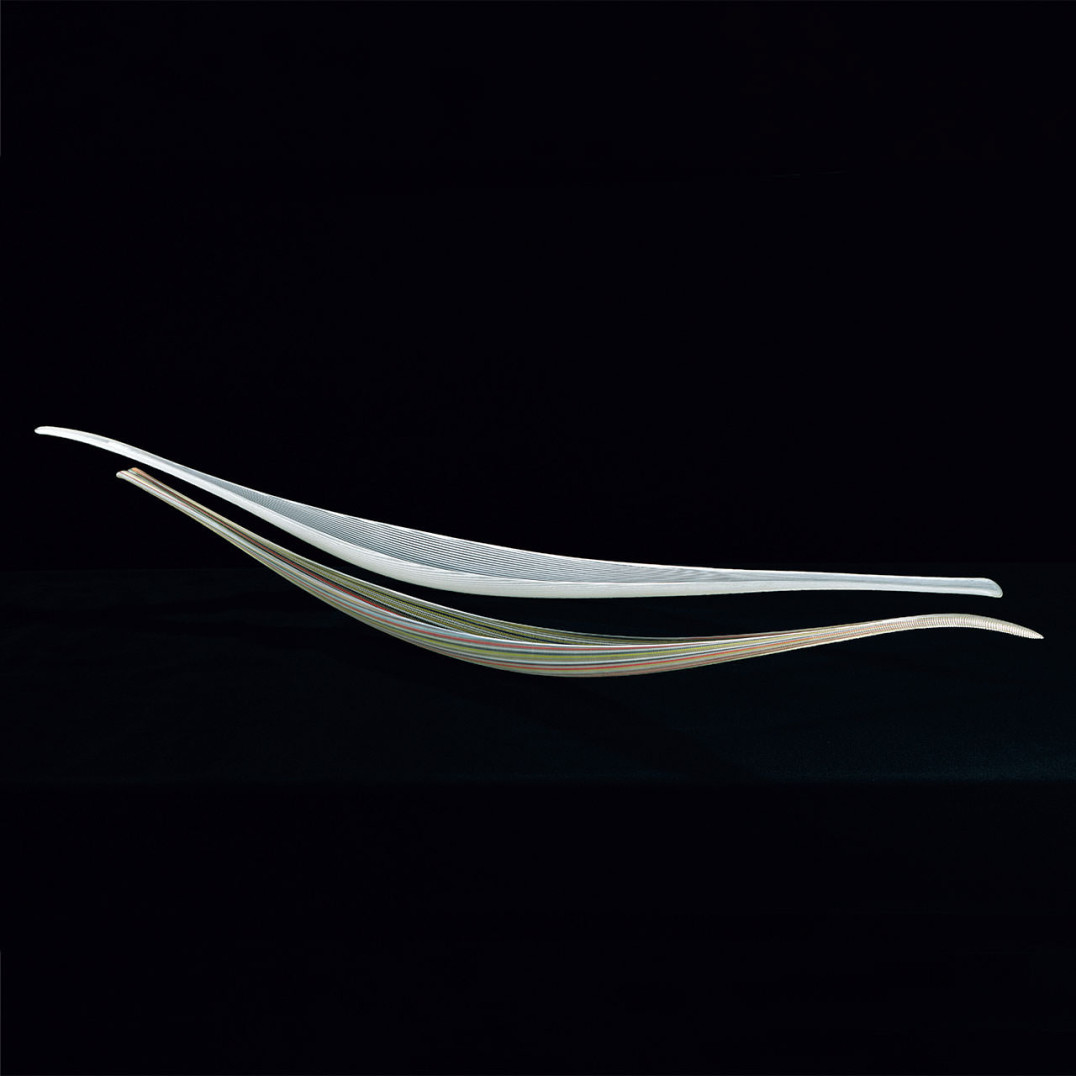
Lino TagliapietraBoats, 2000
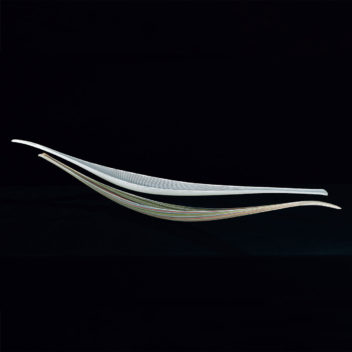
Lino TagliapietraBoats
Two boats, the one on the top composed of horizontal white glass canes, the other with multicolored canes. Both are finished with a dense and regular wheel-carved battitura.
72 1/2 in. long (184 cm)
75 1/2 in. long (192 cm)
Exhibitions:
1998, Venice, Venezia Aperto Vetro;
2000, New York, Venetian Glass, Museum of Arts & Design;
2001, Milan, Murano: Vetri dalla Collezione Olnick Spanu, Spazio Oberdan.
Bibliography and comparative texts:
International New Glass…, 1998, p. 128;
M. Barovier, 1998 (a), pp. 14, 15, 100, 101;
M. Barovier, 1999, p. 390, 391;
Olnick Spanu, 2000, n. 157;
Olnick Spanu, 2001, n. 200.

Lino Tagliapietra 1934–
Lino Tagliapietra, born on Murano, was very young when he began his apprenticeship in the furnaces. In 1956, he was maestro at the Galliano Ferro workshop and after various collaborations with Venini and La Murrina, he went to work for Effetre International as artistic director in 1976. There he was able to perfect new glass textures, which he used to make extraordinary glass pieces. Since 1979, he has taught courses in Murano glass techniques at the Pilchuck Glass School in Stanwood, Washington, and in other schools in America, France, Japan, and Australia, where he has come into contact and collaborated with other glass artists. Recognized as one of the most important interpreters of contemporary glass, he experiments with the material by using glass rods which he himself composes. He creates suggestive pieces that have the most magnificent colors and finishes and that are often textured with special grindings. In the last few years, the artist has furthered his artistic development with a series of installations where the multiplication of single elements, complete in and of themselves, creates a new expressive language. More recently, he has used glass to obtain large panels composed of thick rods, sectioned in different ways, which are laid down to form a brightly colored fabric with an effect comparable to extraordinary pictorial works. His works have achieved widespread acclaim and are part of the collections of major international museums such as the Victoria and Albert Museum in London, the Corning Museum of Glass in Corning, New York, the Musée des Arts Décoratifs in Paris, and others.
Lino TagliapietraBoats, 2000
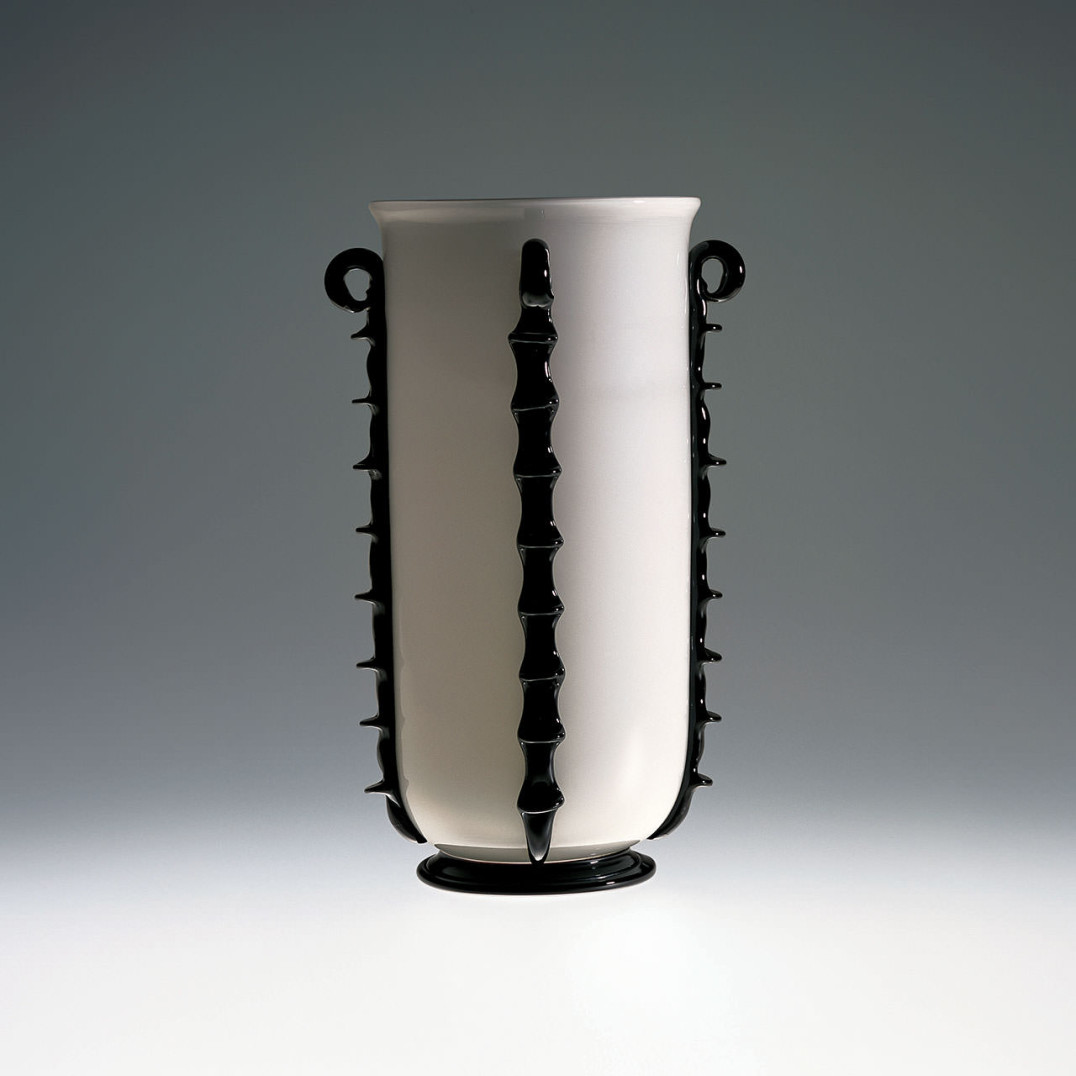
Napoleone MartinuzziIncamiciato, 1930
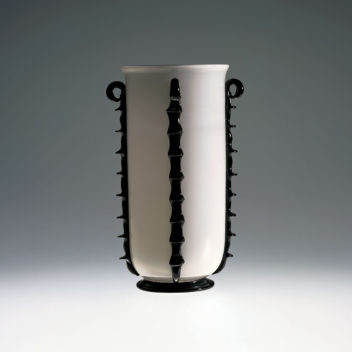
Napoleone MartinuzziIncamiciatoV.S.M. Venini & C., 1930
Vessel in lattimo glass with foot
and a morise decoration in black
pasta vitrea.
11 3/4 in. high (29.8 cm)
Ø; 7 1/4 in. (18.4 cm)
Exhibitions:
2001, Milan, Murano: Vetri dalla Collezione Olnick Spanu, Spazio Oberdan.
Bibliography and comparative texts:
Venini Catalogue, n. 3282;
Gli anni di…, 1987, n. 33;
R. Bossaglia, M. Quesada, 1988,
n. 339;
F. Deboni, 1989, n. 31;
Duplani Tucci, 1989, n. 17;
Olnick Spanu, 2001, n. 29.

Napoleone Martinuzzi 1892–1977
The son of a glassworker from Murano, Napoleone Martinuzzi was a sculptor, designer, and businessman. He attended the Accademia di Belle Arti di Venezia, and later joined the secessionist group of Cà Pesaro, where he exhibited his sculptures in 1908. From 1917 on, he was Gabriele D'Annunzio's favorite artist and he designed a funeral monument for him, as well as sculpture and many works in glass, which may still be seen today at the Vittoriale. Between 1921 and 1931, he directed the Museo Vetrario di Murano, and in 1925 he became a partner and artistic director at the Vetri Soffiati Muranesi Venini & C. After carrying on the concepts defined by his predecessor, Vittorio Zecchin, and creating beautifully transparent blown glass pieces, he elaborated on his own distinct style, directly derived from his experience as a Novecento sculptor. In 1928, he made his first pieces in pulegoso glass, giving life to a sculptural series of vessels with impressive shapes and vivid colors, as well as an unusual collection of cacti, fruits, and animals. After leaving Venini, in 1932 he founded Zecchin-Martinuzzi Vetri Artistici e Mosaici with Francesco Zecchin, for which he designed figures of animals and cacti, opaque vessels with classical shapes, and female nudes in solid massiccio glass. He became artistic director of Alberto Seguso's Arte Vetro, where he made glass sculptures shaped while hot. Between 1953 and 1958, he designed chandeliers and glass tiles for the Vetreria Cenedese. In the '60s and '70s, he designed works produced by Alfredo Barbini for Pauly & C.
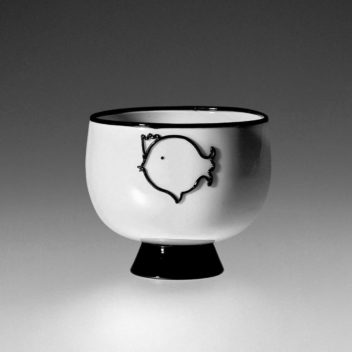
V.S.M. Venini & C. 1925–1932
In 1925, following the closing of Cappellin Venini & C., Paolo Venini founded his own glass company, which he called Vetri Soffiati Muranesi Venini & C. (V.S.M. Venini & C.). While the company, under the artistic direction of sculptor Napoleone Martinuzzi, produced collections designed by Vittorio Zecchin, it soon became known for the pulegosi, an original style created by Venini and Martinuzzi. In 1932, both Martinuzzi and Zecchin left the company. Paolo Venini changed the name of the company to Venini & C. and Milanese architect Tommaso Buzzi became the new artistic director.
Napoleone MartinuzziIncamiciato, 1930
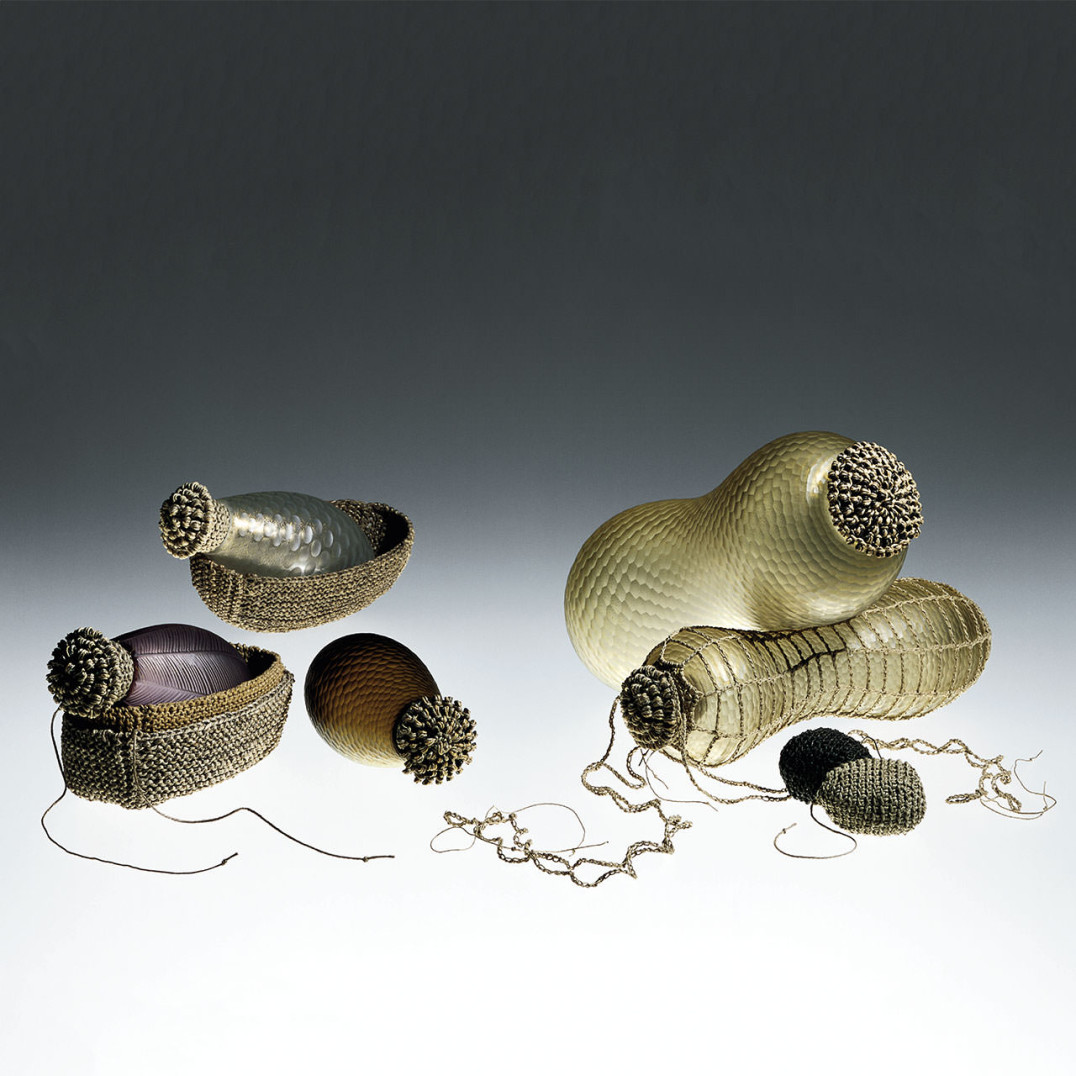
Cristiano BianchinNidi, semi e fusi, 1996

Cristiano BianchinNidi, semi e fusi
A grouping of five nidi, semi, and fusi resting in or among baskets. All glass pieces are transparent aubergine, clear, or straw colored. The surfaces are battuto with applied gold leaf throughout. The corolle, baskets, and other elements are handwoven in hemp by the artist.
8 in. long (20.3 cm)
8 in. long (20.3 cm)
8 in. long (20.3 cm)
13 in. long (33 cm)
13 in. long (33 cm)
Exhibitions:
1996, Venice, Venezia Aperto Vetro;
1998, Venice, Venezia Aperto Vetro;
2000, New York, Venetian Glass, Museum of Arts & Design;
2001, Milan, Murano: Vetri dalla Collezione Olnick Spanu, Spazio Oberdan.
Bibliography and comparative texts:
International New Glass, 1996, p. 101; International New Glass, 1998, p. 59;
New tradition…, 1998, pp. 28-33; Olnick Spanu, 2000, n. 163;
Olnick Spanu, 2001, n. 199; D. Klein, 2001, p. 31.

Cristiano Bianchin 1963–
Born in Venice, where he lives and works, Cristiano Bianchin attended the Accademia di Belle Arti di Venezia, where he studied under the direction of the renowned artist Emilio Vedova and graduated with a degree in painting in 1987. Since 1984, he has exhibited at public institutions and private galleries, and his first personal show was held at the Galleria Bevilacqua La Masa in 1987. As an emerging artist, Bianchin conceives his own artistic language as a reading of experimental poetics involving the possible exchange between the sensuality of seeing and the materials used in art. His first experiments in glass date from 1992 and have been presented in numerous collective and personal exhibitions, such as the one held in 1995 at the Museo Antonio Canova (also known as the Possagno) near Treviso. Bianchin views his work with glass as having an evolutionary continuity based on the classical validity of glassworking techniques, which he confronts with the experimentation of new sculptural forms. His Nidi date from 1996: they are works conceived as mineral architectures whose surface is textured using the refined Murano glass techniques of battitura and molatura. Between 1998 and 1999, he created his Riposapesi, in which the blown glass pieces, black or vividly colored, are synthetically austere. Bianchin was selected in 1995 and 1997 as the Italian artist at the Corning Museum of Glass in New York. He participated at Aperto Vetro, the International Exhibition of Contemporary Glass in Venice, in 1996 and 1998.
Cristiano BianchinNidi, semi e fusi, 1996
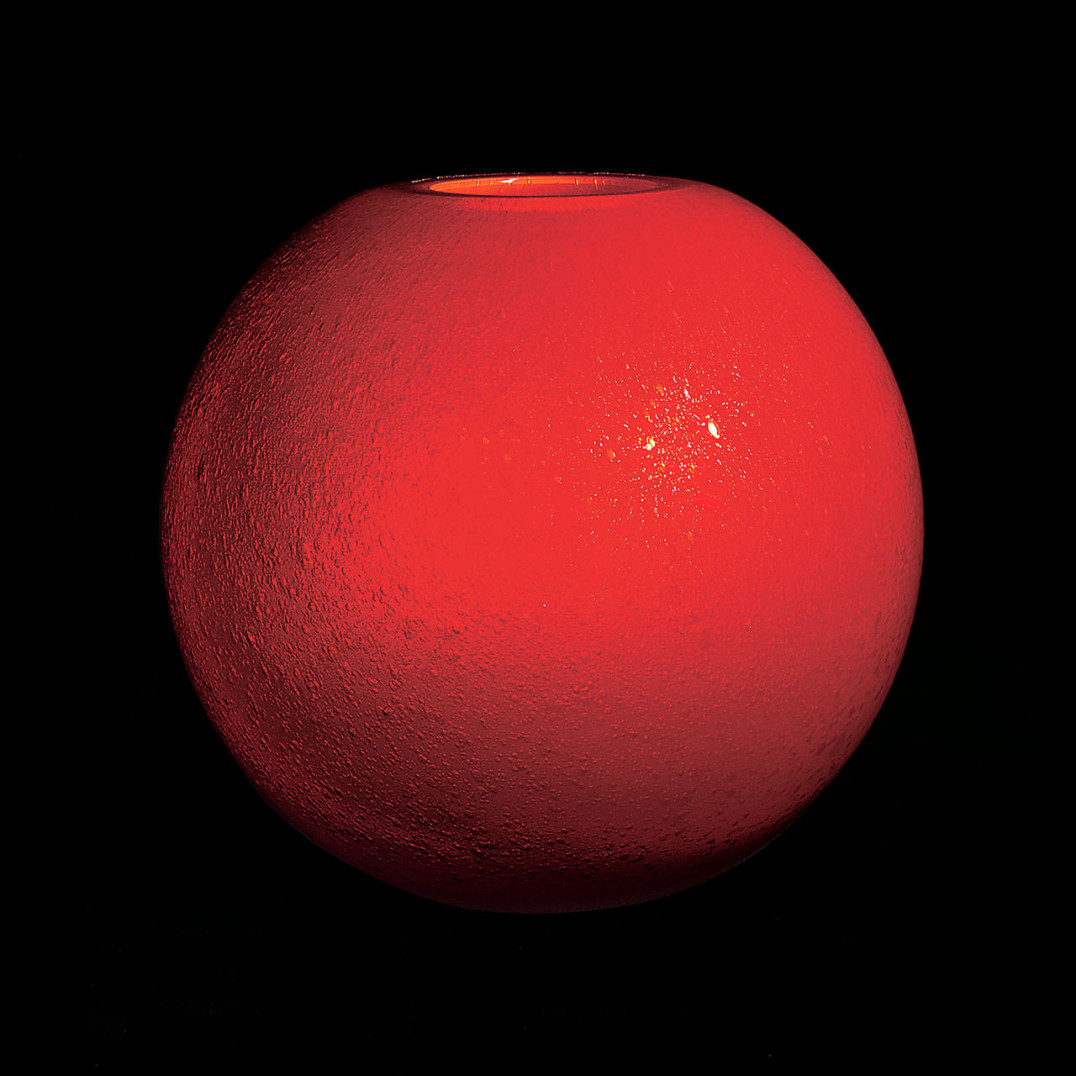
Gae AulentiSfera, 1999
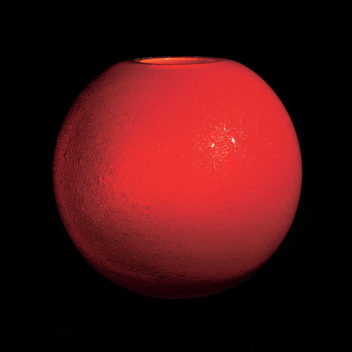
Gae AulentiSferaVenini & C., 1999
Vase from the Millennium III collection in red pulegoso glass.
The vase was crafted by Venini in
a limited edition (99 pieces) to celebrate the 3rd millennium.
Engraved: venini Millennium III 7/99 gae aulenti.
10 5/8 in. high (27 cm)
Collection of the Museum of Arts and Design, New York, Gift of Nancy Olnick and Giorgio Spanu
Exhibitions:
2001, Milan, Murano: Vetri dalla Collezione Olnick Spanu, Spazio Oberdan.
Bibliography and comparative texts:
M. Romanelli, 2000, p. 67;
Olnick Spanu, 2001, n. 198.

Gae Aulenti 1927–2012
Born in Palazzolo dello Stella (Udine), Gae Aulenti graduated in architecture at the Politecnico in Milan in 1953. From 1955 to 1963, she was the editor of Casabella magazine. She worked prevalently in the field of architecture and was responsible for significant museum renovations such as the transformation of the Gare d'Orsay into the Musée d'Orsay in Paris (1980-1987), the new exhibition design for the Musée d'Art Moderne of the Centre Pompidou in Paris (1982), the renovation of Palazzo Grassi in Venice (1986), and the restoration of the Catalan Museum in Barcelona. Her later works include the renovation of the Spazio Oberdan in Milan, where she also designed the renovation of Piazzale Cadorna. She designed showrooms for Fiat and Olivetti, as well as theatre productions. Since the late '50s, she had also taken an interest in product design, producing a variety of objects, mostly furniture and lamps, for companies such as Poltronova, Knoll, Zanotta, Fontana Arte, and Venini.

Venini & C. 1932–2001
In 1932, when both Martinuzzi and Zecchin left the company, Paolo Venini changed the name from Vetri Soffiati Muranesi Venini & Co. (V.S.M. Venini & Co.) to Venini & C.. Milanese architect Tommaso Buzzi became the new artistic director. After 1934, artistic direction was taken on by Carlo Scarpa, who designed most of the company's production through 1947. Side by side with Venini, who often intervened personally in design, Scarpa created numerous collections of objects characterized by refined colors. After World War II, Venini & C. sought numerous collaborations with artists such as architect Giò Ponti and the Swedish-born Tyra Lundgren. After 1948, Fulvio Bianconi, Massimo Vignelli, and Tobia Scarpa contributed significantly to the new direction of the company. Paolo Venini died in 1959 and his son-in-law, Ludovico Diaz de Santillana, took over the management of Venini & C. He not only worked personally as a glass designer but also continued the collaboration started by Paolo Venini with various artists and designers. Starting in 1960, many other designers collaborated with the company, like Thomas Stearns, Toni Zuccheri, Tapio Wirkkala, Laura and Alessandro Diaz de Santillana, James Carpenter, Dan Dailey, Richard Marquis, Benjamin Moore, and Toots Zynsky. In 1986, the de Santillana family left the company, selling their stock to the Ferruzzi group, which guaranteed the fine quality Venini was known for by hiring new designers such as Timo Sarpaneva, Marco Zanini, Ettore Sottsass Jr., Alessandro Mendini, Mario Bellini, Barbara del Vicario, and others. In 1988, Venini was acquired by Royal Scandinavian. Since 2001, Venini S.p.A. has been part of Italian Luxury Industries Group and is led by Giancarlo Chimento, Giuliano Tabacchi, and Giorgio Rizzo.
Gae AulentiSfera, 1999

Franca HelgFranco AlbiniAnemone, 1971
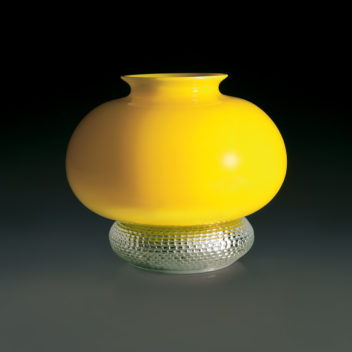
Franca HelgFranco AlbiniAnemoneSalviati & C., 1971
Vase in cristallo glass cased in yellow glass. It is part of a series of vases designed by Albini and Helg for San Lorenzo S.r.l. in Milan in the Anemone, Fresia, Forsizia variations.
Engraved: Salviati per San Lorenzo Albini-Helg.
5 3/4 in, high. (14.6 cm)
Exhibitions:
1972, Vienna, Industrial Design
aus Italien;
2001, Milan, Murano: Vetri dalla Collezione Olnick Spanu, Spazio Oberdan.
Bibliography and comparative texts:
Industrial Design…, 1972, p. 34;
Olnick Spanu, 2001, n. 197.
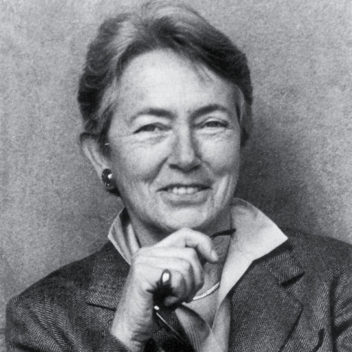
Franca Helg 1920–1989
Franca Helg was born in Milan on February 21, 1920. She graduated from the Architecture School at the Politecnico in Milan in 1945. Her professional career, which she began independently, collaborating with Franco Albini after 1951, with Antonio Piva after 1962, and with Marco Albini after 1965, embraces the entire range of design work. She was a tenured professor of Architectural Composition III in the Architecture Department of the Politecnico in Milan. She held classes in architectural design at the Technische Universität in Munich and at the Catholic University of Córdoba in Argentina, and specialization seminars in Cuzco, Peru, in Quito, Ecuador, in Bogotà, Colombia, in Salvador de Bahia, Brasil, in Madrid, and in Barcelona. She lectured at conferences in Italy and abroad, and was a member of competition juries and evaluation committees in Europe and overseas.

Franco Albini 1905–1977
Franco Albini was born in Robbiate (Como). He graduated with a degree in architecture from the Politecnico in Milan in 1929. The following year, he opened his own architecture studio, concentrating on product and exhibition design, and becoming one of the world's most significant designers in this field during the course of his career. In 1945 and 1946, he directed the architectural review Casabella, and between 1949 and 1977, he turned to teaching, first at the universities in Venice and Turin until 1963, then at the Politecnico in Milan. His works are characterized by a rational severity, which is evident in works such as the renovation and interior design of the Palazzo Bianco in Genoa (1950), the design for the display of the Treasure of San Lorenzo in Genoa (1952) in collaboration with Franca Helg, and the restoration of the Palazzo Rosso in Genoa (1952-1961). His successful work in the field of design is noted for the essential elegance which distinguishes his many furniture projects, such as the Margherita armchair for Bonacina (1950), the Fiorenza armchair for Artflex (1952), the Luisa chair for Poggi (1954), and the Credenza (1967) designed in collaboration with Franca Helg. This partnership also produced the collection of glass pieces designed for San Lorenzo S.r.l. and crafted by Salviati. In the early '60s, in collaboration with Franca Helg and Bob Noorda, he designed the stations' furnishings and signage for Milan's Subway Line 1.
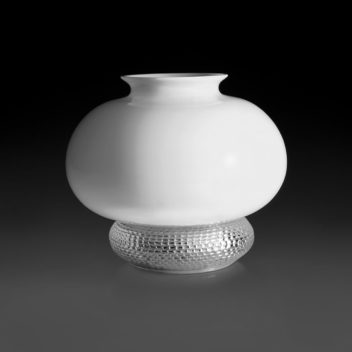
Salviati & C. 1877–
In 1859, Antonio Salviati, a lawyer, founded the “Salviati Dott. Antonio fu Bartolomeo” furnaces. With the help of Lorenzo Radi and Enrico Pondio, he developed a new method of making mosaic with glass. The mosaic tesserae that decorate the dome of St. Paul’s Cathedral and the Hall of the House of Parliament in London, the Opera Theatre in Paris, and many others were made by Salviati. In 1877, Salviati founded Salviati & C. in Murano, employing some of the best glass masters operating at that time: Antonio Camozzo and the talented Giovanni, Giuseppe, Benvenuto and Benedetto Barovier. They created a collection of glasses, stemware, bowls, chandeliers and vases, and a range of etched pieces. Salviati, who was known for his innovation, is recognized for the rediscovery of the avventurina, a fiamma, and opalino types of glass. Antonio Salviati died in 1890 and at the beginning of the 20th century the company became property of Maurizio Camerino, a young glassmaker who had started his craft at Salviati & C. During the 1930s, the Camerino family decided to abandon the production of mosaic to focus on the making of decorative objects and lighting. In the 1950s, with Luciano Gaspari as the new artistic director of Salviati & C., the company developed frequent collaborations with architects such as Sergio Asti, Romano Chirivi, and Vinicio Vianello, as well as with international designers such as Heinz Oestergaard and Claire Falkenstein. Today, Salviati remains one of the most representative companies for glassmaking in the world and continues to establish collaborations with many inspiring designers.